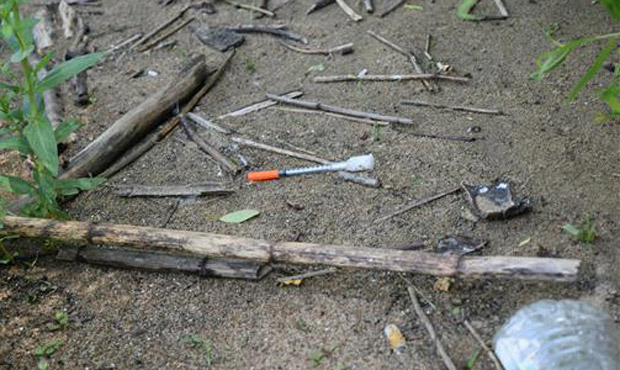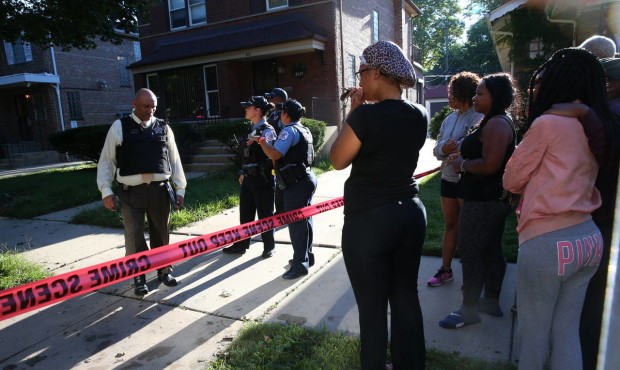AP
CSI for animals: Forensic vets battle pet abuse, neglect

Before and after photos are shown Thursday April 7, 2016 of a boxer named Brewster cared for at the American Society for the Prevention of Cruelty to Animals (ASPCA ) forensic unit, after he was dropped off last year by a good Samaritan who said he found the starving animal in a park, in New York. The ASPCA forensic veterinarians work with the New York Police Department to capture evidence and punish animal abusers. (AP Photo/Bebeto Matthews) (AP Photo/Bebeto Matthews)
NEW YORK (AP) — The cocker spaniel arrives at the animal hospital with a police officer, whimpering and shaking. He has a pus-filled pink socket for a left eye and is so skinny his spine and ribs show through his caramel-colored fur.
Because animal abuse is suspected, this dog won’t be handled like the other pets coming in for treatment to the American Society for the Prevention of Cruelty to Animals — it will go instead to a specialized team of forensic veterinarians who are trained to treat animals while also developing evidence for possible criminal charges.
“The message to people who are abusing animals is that there is action being taken,” said Dr. Alison Liu, one of the forensic vets on staff. “And if they’re thinking they may not get caught, that’s not always the case.”
The New York-based nonprofit has a team of three forensic vets dedicated to capturing evidence to punish animal abusers — their jobs include traveling to crime scenes and working with the New York Police Department in a new partnership that has seen cruelty-related arrests doubled in the past two years. They have a necropsy lab, evaluation unit and a rehabilitation center that houses about 60 animals with the goal of adoption.
The team leader, Dr. Robert Reisman, developed evaluation standards that are used nationwide in determining cases of abuse and neglect, and testified in some of the first animal cruelty cases to use DNA at trial to obtain felony convictions. The nonprofit agency has also created an animal forensic sciences program at the University of Florida, and has a traveling team of forensic vets that help out around the country — an ASPCA crew rescued some 600 animals from a no-kill shelter in North Carolina in January suspected of abuse and neglect. The nonprofit is funded mostly through donations.
Last year, the forensic team in New York saw 700 animals — mostly cats and dogs, but some chickens and rabbits, too.
“You can’t really separate out what’s happening to animals with what’s happening to people,” Reisman said. “The most obvious reason is the connection between animal abuse and human interpersonal violence. The cases we see on a regular basis are domestic abuse cases where there’s both a human victim and an animal victim.”
One such case was a pit bull named Honey, who was shot in the mouth by a man who was also accused of beating up his girlfriend. He was charged with animal cruelty, menacing and strangulation. The girlfriend and the dog survived.
The team can’t talk about the spaniel because it’s an ongoing case. But each live animal brought in receives the same treatment. They are physically examined and weighed multiple times. A specific set of blood work is completed to rule out possible illness, and then the vets set out to heal the animal.
One dog, a boxer named Brewster, was dropped off last year by a good Samaritan who said he found the starving animal in a park. The dog was shockingly thin with sad, brown eyes.
Police later discovered the Samaritan was actually the owner, who starved him. In part because of the forensic evidence, he ended up pleading guilty to felony animal cruelty charges.
Meanwhile, Brewster was carefully cared for, eventually regaining his health, doubling his weight and getting adopted.
Veterinarian Laura Niestat said that in addition to starvation, the vets often see cases of neglect in which tight collars wear off layers of skin, frostbite destroys ears and tails, and extreme matting of fur chokes limbs like a tourniquet.
Some animals have been shot, others beaten and suffocated.
“We try to focus on how we’re helping the animals,” Niestat said, “and not on how awful it is.”
Copyright © The Associated Press. All rights reserved. This material may not be published, broadcast, rewritten or redistributed.









































